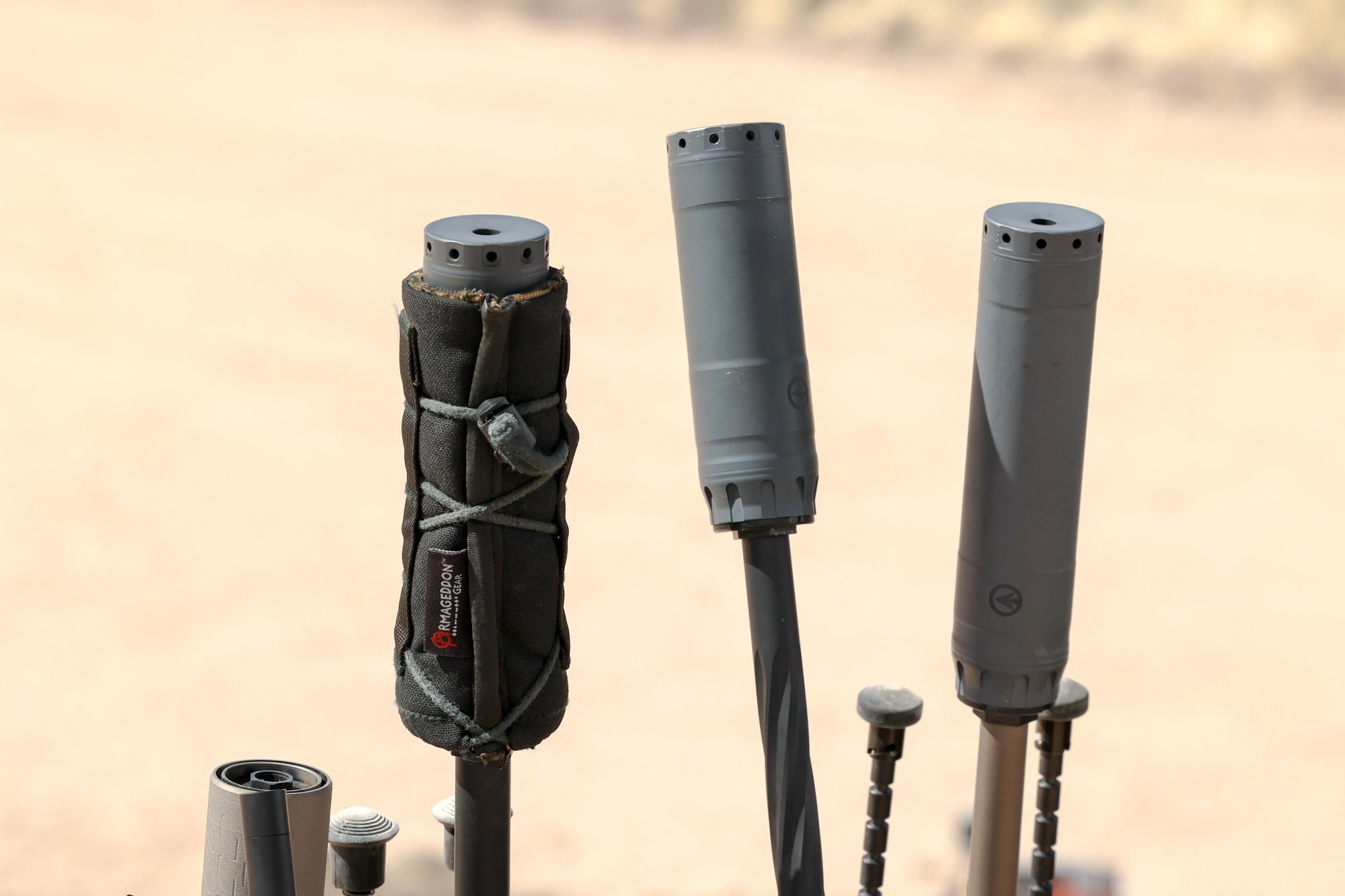Silencer Deregulation Plan Fails in the Senate

Early Friday morning the United States Committee on the Budget announced that Republican efforts to deregulate suppressors would not pass Senate budget rules.
The provision in question, Section 70436, sought to deregulate “gun silencers and easily concealable guns,” or short barreled shotguns and rifles, from the National Firearms Act. The current language of the Hearing Protection Act would eliminate the ATF application that requires fingerprints, a waiting period, and the $200 tax stamp for any suppressor purchase. The SHORT Act would have deregulated short-barreled rifles and shotguns so they could be purchased using the same standard background check process for other firearms.
As this legislation percolated, two camps within the firearms industry emerged. One, backed by the National Shooting Sports Foundation and other industry players, thought it was risky to lump all these initiatives together within the massive budget reconciliation bill, also known as the One Big Beautiful Bill. Doing so risked not passing any wins for gun owners. The other camp, which included advocacy groups like the American Suppressor Association, took a no-compromise approach.
Ultimately all the suppressor and short-barreled firearm provisions were thrown out by the Senate’s non-partisan bureaucrat, who determined they did not pass the Byrd Rule. The Byrd Rule requires budget reconciliation bills, like this one, to remain focused on fiscal issues. In this case, the Senate parliamentarian ruled that deregulating suppressors is considered too policy-forward to be included in this bill.
“This is ultimately exactly what we expected to happen,” says Joe Kurtenbach, Silencer Central’s senior manager of media and relationships. “Our lobbying efforts weren’t popular [in the entire 2A community] because we weren’t in the no-compromise crowd. But we have a plan A and a plan B. We felt strongly that Plan A, where the HPA goes through — is a really good outcome for freedom and for the firearms community. But we felt much more confident in Plan B.”
To be clear, “Plan A” centered around eliminating the tax stamp and suppressor registration with the ATF. “Plan B” focused on the tax stamp alone. Kurtenbach refers to this backup plan as a “belt-and-suspenders” approach — if one method fails, you’re not left with your pants around your ankles.
“The House — I think, wisely — put both sets of language into their bill. I think that gave gun owners the best chance of getting something out of it,” says Kurtenbach. “If we can’t beat both the tax stamp and regulation piece, can we at least reduce the financial burden for suppressor customers? … Would that pass the Byrd Rule? We hope it will if that gets reintroduced.”
The Senate, however, went for the all-or-nothing approach advocated by the American Suppressor Association, Gun Owners of America, and other groups gathered under a “No Compromise Alliance.”
“Let’s not mince words – the Senate Parliamentarian got this wrong,” American Suppressor Association president and executive director said Knox Williams in a statement. “Removing suppressors and short-barreled firearms from the NFA tax scheme directly impacts revenues and is unquestionably compliant with the rules of reconciliation. This seemingly politically motivated decision was undoubtedly influenced by fearmongering and disinformation by radical liberals and anti-gun activists.”
Most Washington insiders agree, however, that this outcome was procedural, not political, and fully expected. While changing the amount a suppressor stamp costs generally falls within reconciliation requirements, the elimination of certain laws altogether are often considered too gun-policy heavy to pass the so-called “Byrd Bath.” Earlier this week, for instance, the same rule was applied to several provisions in the bill related to the sale of federal land. The parliamentarian ruled that Senator Mike Lee’s attempt to sell millions of acres of federal land through the budget reconciliation process also violated budget rules.
One D.C. source, who asked not to be named due to heated disagreements within the 2A community, says the all-or-nothing approach of trying to pass the HPA in the Senate was a risky overreach. Senate Majority Leader John Thune does not plan to overrule the parliamentarian, which is technically possible but comes with a fresh set of political and policy risks. For example, it could set a precedent that would allow Democrats to, say, ban certain magazines and AR-style rifles when they have the majority again.
If Senators choose to leave the suppressor language in the bill, it will now be subject to a 60-vote threshold. Since there’s currently a small Republican majority in the Senate (53 Republicans to 47 Democrats), it’s unlikely that suppressor provision would ever pass the 60-vote threshold.
One likely course of action, according to insiders, is that the Senate will simply adopt the HPA language from the House version of the bill. That would allow for a reduced suppressor tax stamp fee even if suppressors aren’t deregulated. The $200 tax stamp has remained in place since the National Firearms Act of 1934, which was intended to make suppressor ownership prohibitively expensive.
Alternatively, new language could potentially be added to the Senate version of the bill and reviewed later in the full conference bill, when the House and the Senate have to come together.
“There’s still a lot of game left to be played,” says Kurtenbach. “What’s nice is the House language has already passed one body of legislature, so [using the House version of the HPA in the Senate] might be the easiest substitution to make.”
On the whole, Kurtenbach is optimistic about future changes to suppressor regulation for gun owners.
“Silencer Central remains committed to the Hearing Protection Act and the full deregulation of suppressors, both in the registration and the tax stamp. We did not adopt the absolute no-compromise approach that some of our colleagues in the industry did, but that is the goal we’re working toward and we will take a victory of any kind … So if that’s HPA and we can get it passed, perfect. But if, for the time being, it’s a reduction in the financial burden, we’re for that too. We just want the win for our customers.”
In May, Silencer Central was accused of lobbying against the HPA by several YouTube creators, who circulated partial screenshots of a $50,000 lobbying statement to “develop and support suppressor tax stamp conservation legislation.”
“Conveniently, most of the screenshots cut out the date,” says Kurtenbach. “The date for that lobbying statement was Q2 2024. And what it had to do with was a 2023-24 effort to get the suppressor tax stamp money pushed toward the Pittman-Robertson Act and other conservation efforts.”
At the time, Biden was in office, there was no active push to legalize the HPA, and Silencer Central figured that if gun owners had to pay tax stamp money, they might as well support legislative efforts to redirect suppressor tax-stamp fees into a Pittman-Robertson-style conservation fund.
“If we have to pay a tax just like firearms and ammunition, let’s at least dictate where it goes,” Kurtenbach says of the company’s support at the time. “So that lobbying statement ties directly to conservation — not the conservation of the tax stamp.”
Still, critics accused Silencer Central of potentially profiting from the continued regulation of suppressors, but as Kurtenbach points out and as CEO Brandon Maddox explained in a May 18 interview on Gun Talk Radio, they do not charge customers for any ATF paperwork, setting up a gun trust, or a processing fee. Silencer Central says it makes more silencers than any other company, and that the company stands to make significantly more money if the HPA passes (since it’s likely that gun owners would buy many more suppressors) than if suppressors remain highly regulated.
Andrew McKean contributed reporting.
Read the full article here








